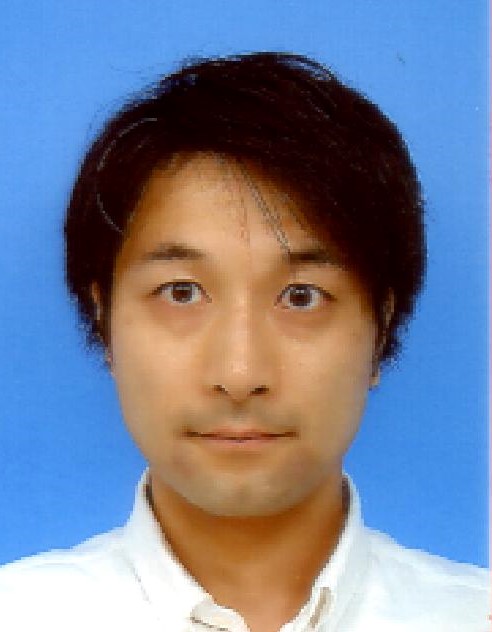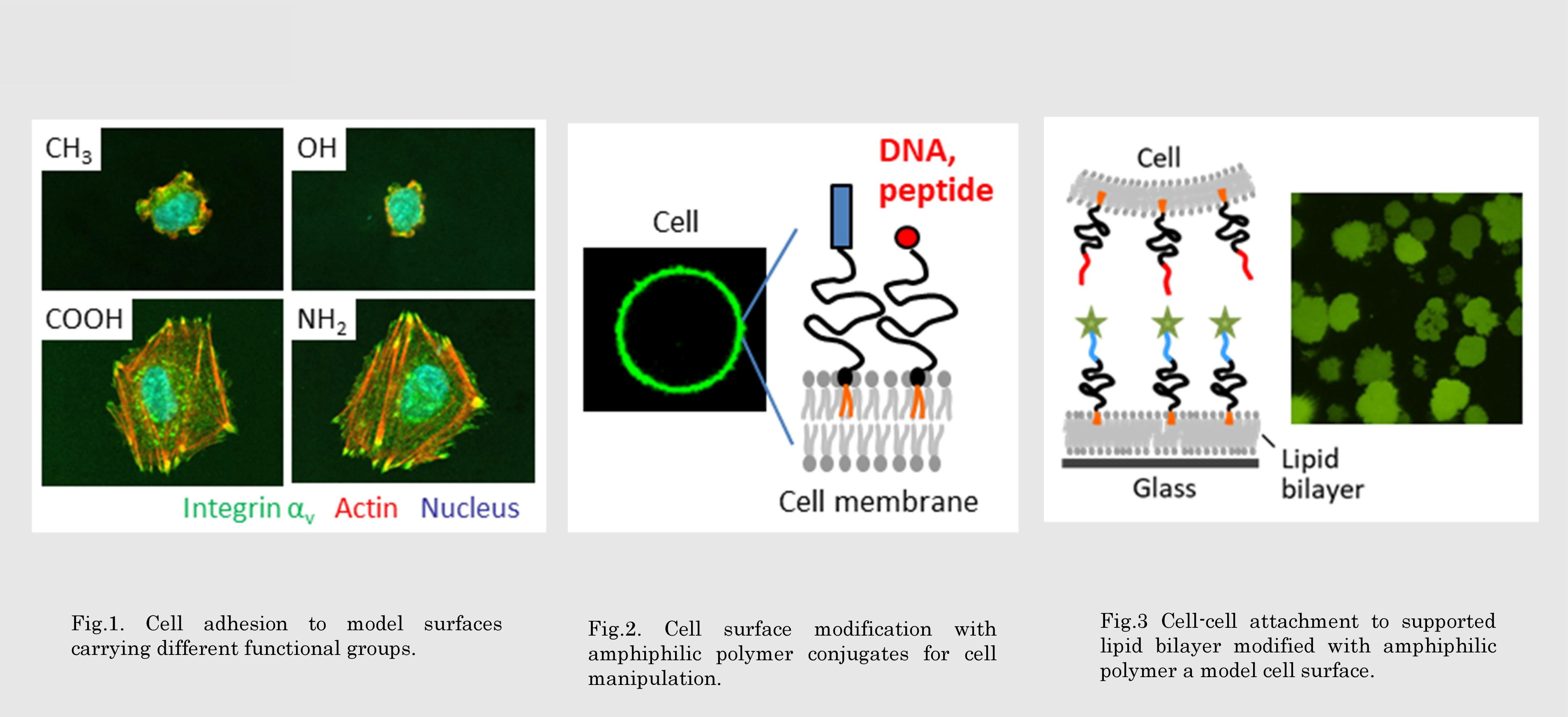IMCE
Institute for Materials Chemistry and Engineering, Kyushu University
九州大学
先導物質化学研究所

LAST UPDATE 2019/06/06
-
研究者氏名
Researcher Name有馬祐介 Yusuke ARIMA
准教授 Associate Professor -
所属
Professional Affiliation九州大学先導物質化学研究所
物質基盤化学部門・ナノ界面物性分野
Institute for Materials Chemistry and Engineering, Kyushu University
Division of Fundamental Organic Chemistry, Nanomaterials and Interfaces -
研究キーワード
Research Keywordsバイオマテリアル
表面修飾 / 解析
材料-細胞 / 細胞-細胞間相互作用
Biomaterials
Surface modification / analysis
Cell-material / cell-cell interaction
- 研究テーマ
Research Subject -
人工材料および生細胞の表面修飾による機能制御
Surface design of materials and living cells for biomedical applications
研究の背景 Background
生体内で細胞は,液性因子,細胞外マトリクス,隣接細胞など周辺環境との相互作用に応じて様々な応答を示します。組織工学や再生医療などで細胞培養や三次元組織の作製を生体外で行うためには,人工または天然由来の材料を用いて周辺環境を適切に調節する必要があります。そのためには,生体と材料間で起こる諸現象の理解とその知見に基づいた材料設計が重要となります。
Cell behavior is regulated by its microenvironment, including interactions with soluble factors, extracellular matrices, and neighboring cells in living system. It is crucial to control the cell microenvironment using artificial or natural materials in order to culture cells and to fabricate multicellular tissues in vitro for tissue engineering and regenerative medicine. The understanding of biological responses to materials provides important information on materials design for biomedical applications.
研究の目標 Outcome
人工材料および細胞の表面に着目し,そこで起こる相互作用の理解と表面修飾による細胞操作技術の構築に取り組みます。人工材料-細胞または細胞-細胞の相互作用を種々の高感度表面分析手法によって詳細に調べ、それらの分子レベルでの理解を深めます。さらに,人工材料または生細胞の表面を高分子や生理活性物質で修飾する技術を確立し,細胞接着や多細胞組織形成の制御を目指します。
We aim at gaining deeper insights into the molecular events at the surfaces of biomaterials and living cells using surface-sensitive analytical techniques and well-defined model system. We also aim at developing surface modification of biomaterials and living cells with artificial or bioactive molecules for cell manipulation including cell culture and formation of multicellular spheroids.
研究図Research Figure

Fig.2. Cell surface modification with amphiphilic polymer conjugates for cell manipulation.
Fig.3 Cell-cell attachment to supported lipid bilayer modified with amphiphilic polymer a model cell surface.
文献 / Publications
Acta Biomaterialia, 26, 72-81 (2015). Biomaterials, 53, 318-329 (2015). Sci. Technol. Adv. Mater., 17, 677-684 (2016).
研究者HP
- arima
 ms.ifoc.kyushu-u.ac.jp
ms.ifoc.kyushu-u.ac.jp - http://www.cm.kyushu-u.ac.jp/ktamada/